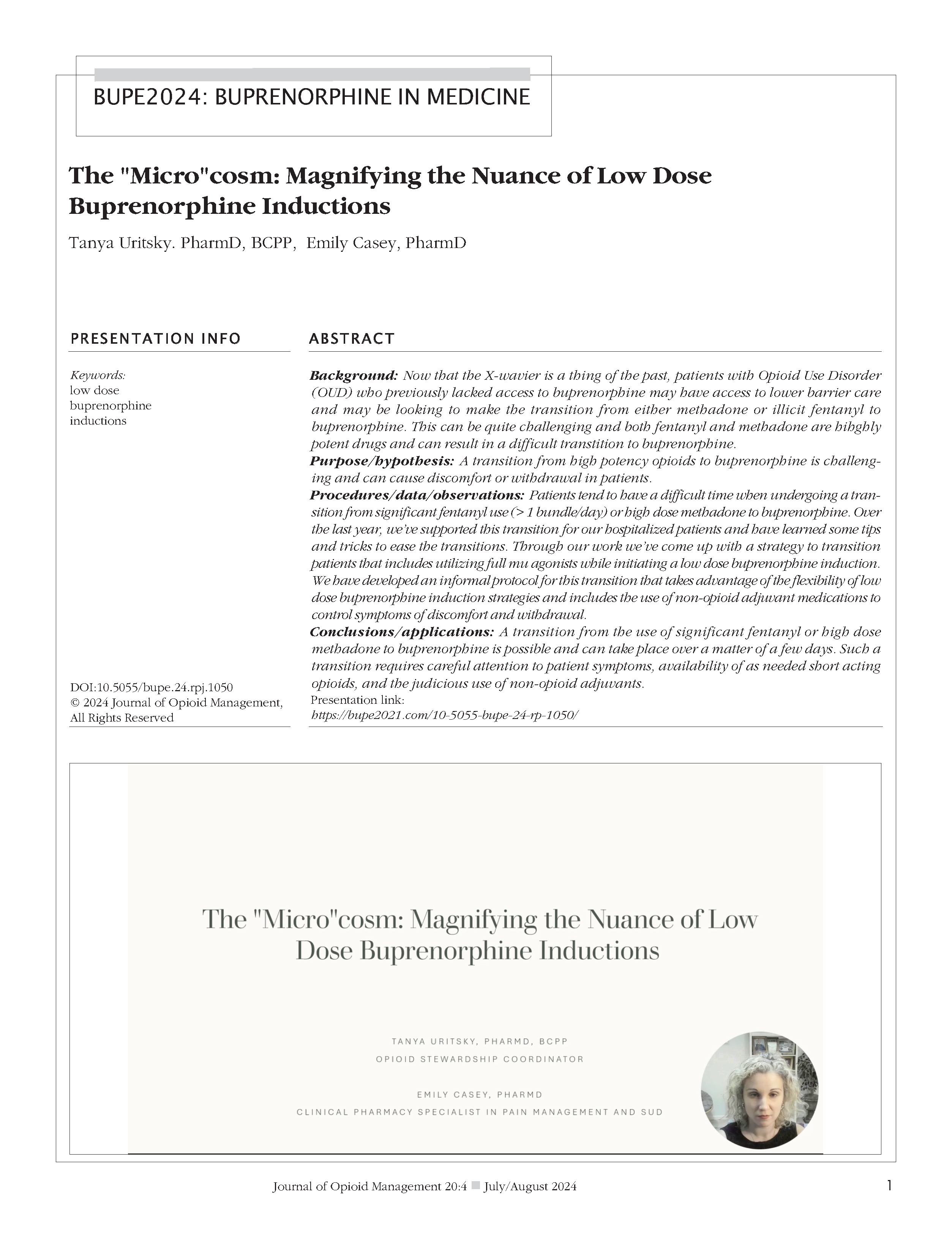The "Micro"cosm: Magnifying the Nuance of Low Dose Buprenorphine Inductions
DOI:
https://doi.org/10.5055/bupe.24.rpj.1050Keywords:
low dose, buprenorphine, inductionsAbstract
Background: Now that the X-wavier is a thing of the past, patients with Opioid Use Disorder (OUD) who previously lacked access to buprenorphine may have access to lower barrier care and may be looking to make the transition from either methadone or illicit fentanyl to buprenorphine. This can be quite challenging and both fentanyl and methadone are hihghly potent drugs and can result in a difficult transtition to buprenorphine.
Purpose/hypothesis: A transition from high potency opioids to buprenorphine is challenging and can cause discomfort or withdrawal in patients.
Procedures/data/observations: Patients tend to have a difficult time when undergoing a transition from significant fentanyl use (> 1 bundle/day) or high dose methadone to buprenorphine. Over the last year, we've supported this transition for our hospitalized patients and have learned some tips and tricks to ease the transitions. Through our work we've come up with a strategy to transition patients that includes utilizing full mu agonists while initiating a low dose buprenorphine induction. We have developed an informal protocol for this transition that takes advantage of the flexibility of low dose buprenorphine induction strategies and includes the use of non-opioid adjuvant medications to control symptoms of discomfort and withdrawal.
Conclusions/applications: A transition from the use of significant fentanyl or high dose methadone to buprenorphine is possible and can take place over a matter of a few days. Such a transition requires careful attention to patient symptoms, availability of as needed short acting opioids, and the judicious use of non-opioid adjuvants.

Downloads
Published
How to Cite
Issue
Section
License
Copyright 2005-2025, Weston Medical Publishing, LLC and Journal of Opioid Management. All Rights Reserved.










